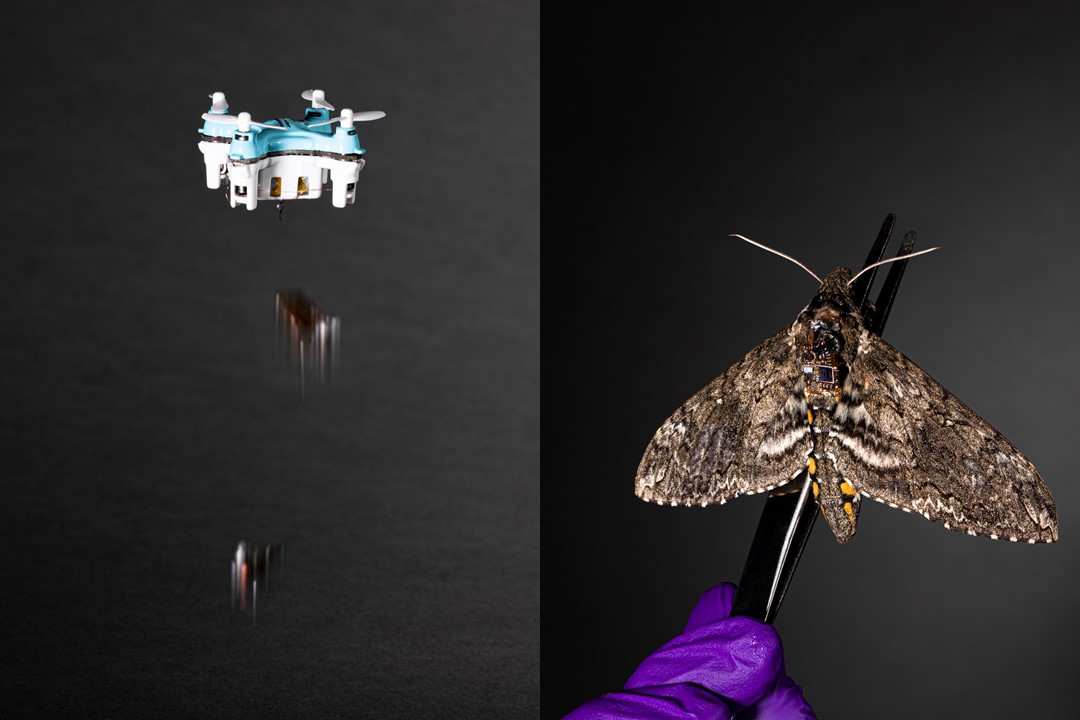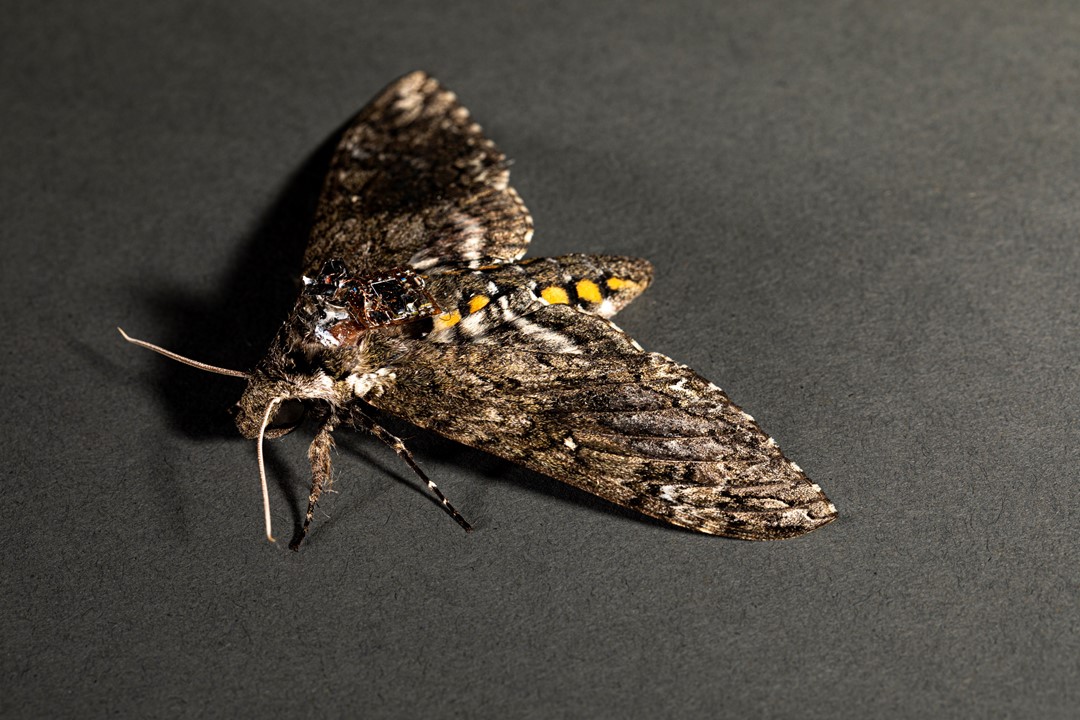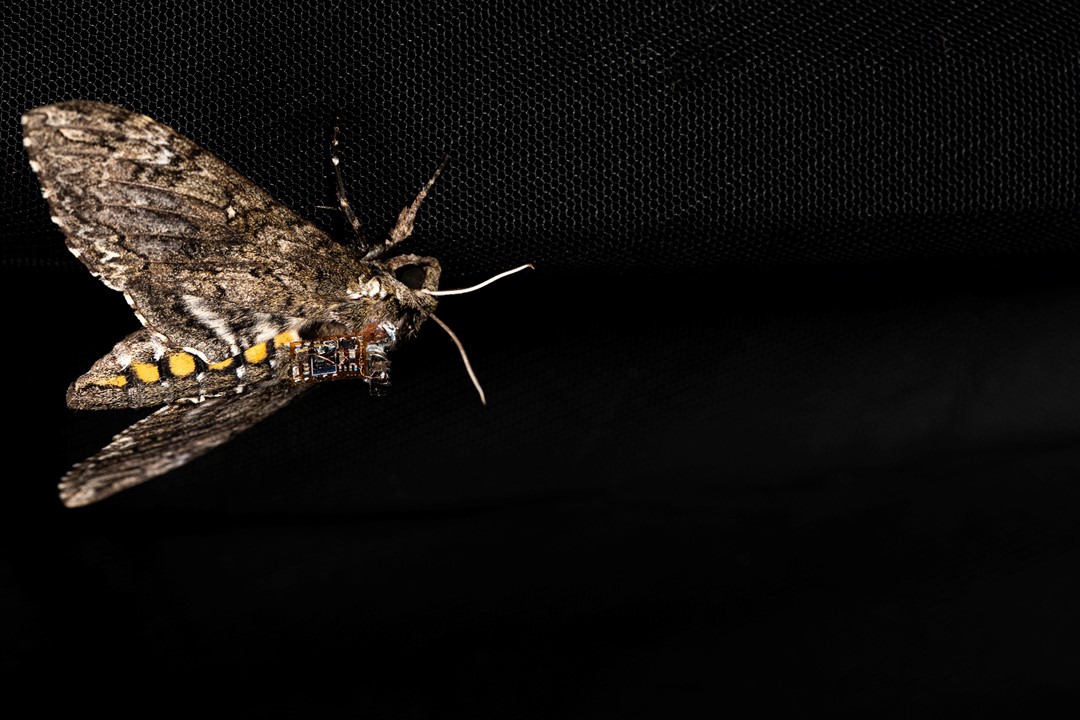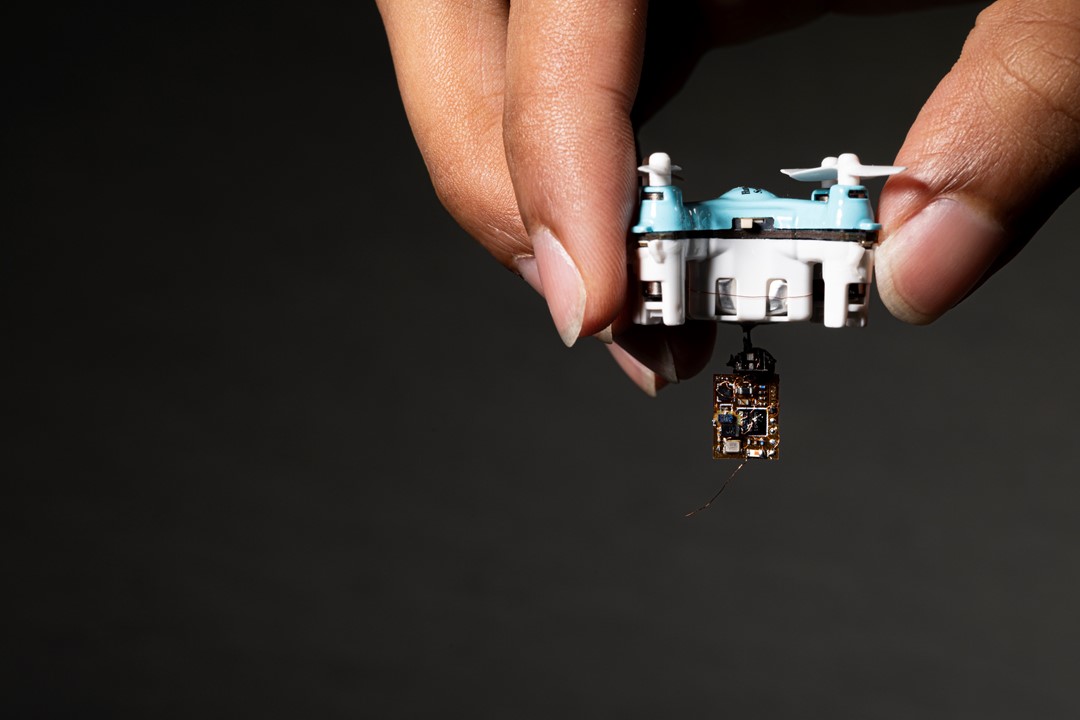Airdropping sensor networks from drones and insects

Photo: Mark Stone/University of Washington
We present the first system that can airdrop wireless sensors from small drones and live insects. In addition to the challenges of achieving low-power consumption and long-range communication, airdropping wireless sensors is difficult because it requires the sensor to survive the impact when dropped in mid-air. Our design takes inspiration from nature: small insects like ants can fall from tall buildings and survive because of their tiny mass and size. Inspired by this, we design insect-scale wireless sensors that come fully integrated with an onboard power supply and a lightweight mechanical actuator to detach from the aerial platform. Our system introduces a first-of-its-kind 37 mg mechanical release mechanism to drop the sensor during flight, using only 450 μJ of energy as well as a wireless communication link that can transmit sensor data at 33 kbps up to 1 km. Once deployed, our 98 mg wireless sensor can run for 1.3-2.5 years when transmitting 10-50 packets per hour on a 68 mg battery. We demonstrate attachment to a small 28 mm wide drone and a moth (Manduca sexta) and show that our insect-scale sensors flutter as they fall, suffering no damage on impact onto a tile floor from heights of 22 m.
Such an approach takes advantage of these tiny, highly efficient biological insects which are ubiquitous in many outdoor ecosystems, to essentially provide mobility for free. Doing so however requires addressing key technical challenges of power, size, weight and self-localization in order for the insects to perform location-dependent sensing operations as they carry our IoT payload through the environment. We develop and deploy our platform on bumblebees which includes backscatter communication, low-power self-localization hardware, sensors, and a power source. We show that our platform is capable of sensing, backscattering data at 1 kbps when the insects are back at the hive, and localizing itself up to distances of 80 m from the access points, all within a total weight budget of 102 mg.
People
Students
Vikram Iyer
Maruchi Kim
Shirley (Qiuyue) Xue
Anran Wang
Faculty
Shyam GollakotaContact: sensordrop@cs.washington.edu
Publications
Airdropping sensor networks from drones and insects [PDF] [Code] [Talk]
Vikram Iyer, Maruchi Kim, Shirley Xue, Anran Wang, Shyamnath GollakotaMobicom, 2020




Photos: Mark Stone/University of Washington
